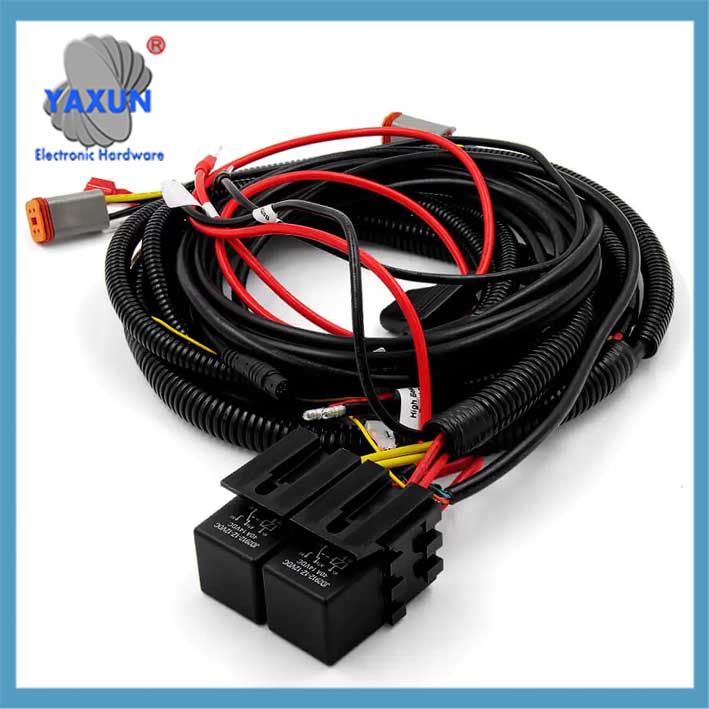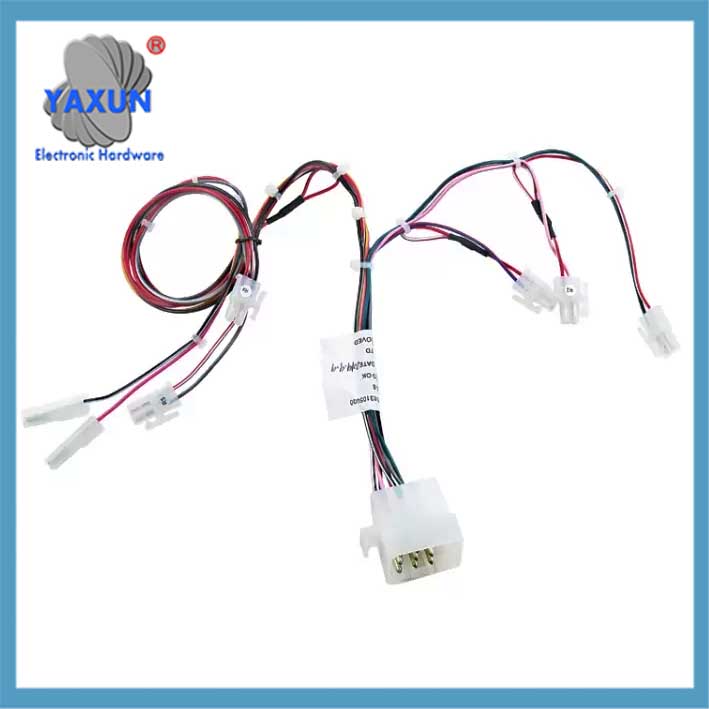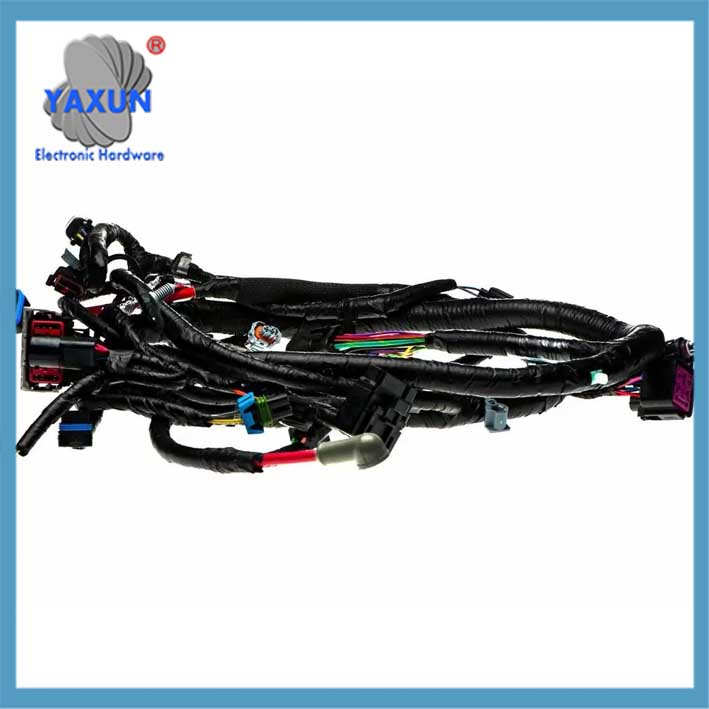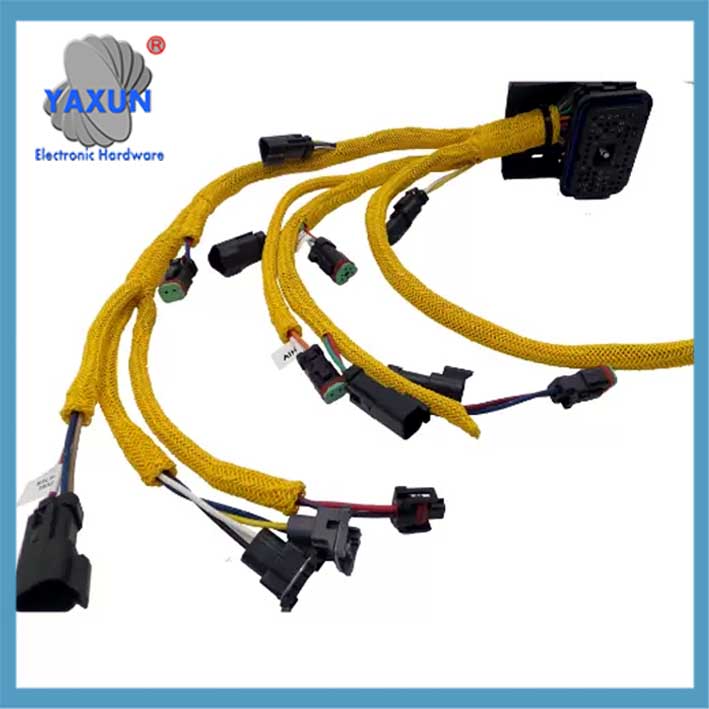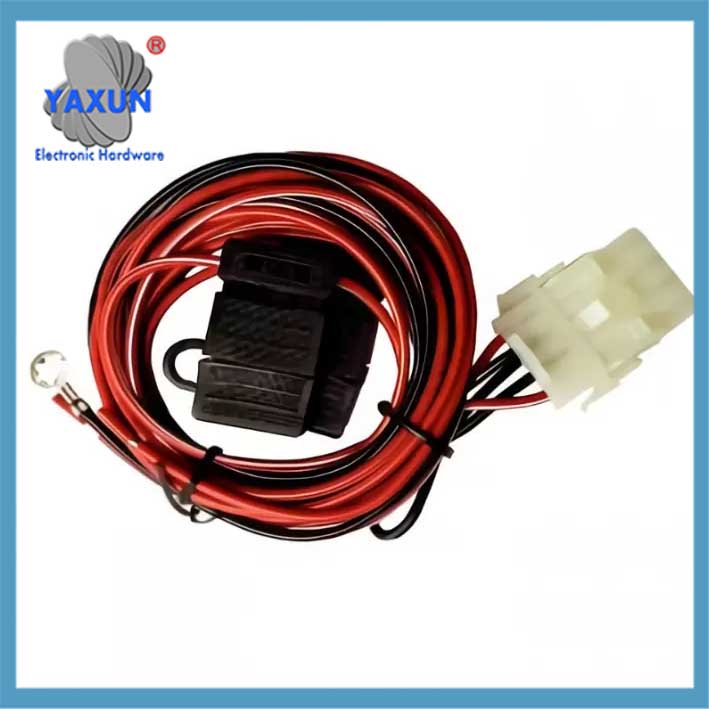Produktkategorien
Produkt Tags
Funktion und Herstellung von Kfz-Kabelbäumen
Die Hauptfunktion eines Kfz-Kabelbaums besteht darin, elektrische Energie und Signale effizient zwischen den elektrischen Komponenten des Fahrzeugs zu übertragen, Gewährleistung des ordnungsgemäßen Funktionierens verschiedener Systeme. Die Herstellung von Kabelbäumen erfordert Design, Prototyping, Montage, und strenge Tests, um Zuverlässigkeit und Sicherheit zu gewährleisten.
ICH. Core functions of automotive wiring harnesses
Power distribution and energy transmission
Provide stable power support for automotive electrical appliances (such as headlights, ABDECKUNG) to ensure the normal operation of electrical equipment;
The transmission current range covers 0.5-6.0mm² wires to meet different power requirements34.
Signal interaction and control
Transmit sensor data (such as speed, Temperatur) to the control unit to achieve real-time monitoring of vehicle status;
Realize multi-channel signal transmission through the CAN bus to reduce the complexity of traditional wiring harnesses48.
Networked connection
Build a neural network for the vehicle electrical system and connect the entire vehicle’s electronic equipment (instruments, central control, safety systems) in series;
Support the high-speed data transmission requirements of on-board intelligent systems (such as ADAS).
Ii. Automotive wiring harness production process
Wire cutting: Cut the wire according to the drawing, the accuracy must be controlled at ±0.5mm, and the stripping length error must be ≤0.3mm;
Crimp: Match the terminal and the wire cross-sectional area, and set the crimping force range (such as 200-300N for 0.5mm² wire crimping force);
Pre-installation: Assemble the wiring harness branches in sections (such as engine compartment wiring harness, instrument wiring harness), and use bellows/tape protection;
General assembly: Integrate the branch wiring harnesses and fix them with buckles/brackets to avoid interference with moving parts25
Prüfen: Perform continuity test (resistance ≤5mΩ), withstand voltage test (AC 500V/1min without breakdown) and waterproof test (IP67 level);
III. Materials and technical requirements
Core materials
Wire: tinned copper wire (conductivity ≥98%), aluminum-magnesium alloy wire (lightweight scenario); Insulation layer: high temperature resistant (-40℃~125℃) PVC/PE material, fluoroplastics are used in high frequency scenarios;
Connector: plug-in life ≥5,000 times, contact resistance ≤10mΩ (such as GH1.5/M12 series).
Technology trend
High voltage transmission: New energy vehicles use wires above 600V, with shielding layer to suppress electromagnetic interference;
Lightweight design: wire cross-sectional area optimization (such as aluminum instead of copper), integrated wiring harness layout7;
Automated production: laser welding replaces traditional soldering, with an accuracy of ±0.1mm and an efficiency increase of 30%.
IV. Typical application scenarios Power system: The engine wiring harness needs to withstand high temperature vibration, and a metal wire box is used to fix the branch wiring harness;
Smart cockpit: The instrument panel wiring harness integrates CAN/LIN bus, supports multi-screen linkage and voice control;
Safety system: The seat belt pretensioner/airbag wiring harness needs to pass 100,000 bending tests to ensure the reliability of emergency triggering.
Notiz: During the design phase, wiring harness path planning (such as avoiding high-temperature exhaust pipes), EMC protection, and maintenance convenience must be considered simultaneously.
Funktion:
Power and Signal Transmission:
The wiring harness acts as a conduit, delivering electricity and signals from the battery to all electrical components, including the engine control unit (ECU), Sensoren, Aktuatoren, und andere Systeme.
System Coordination:
It ensures that different electrical systems work together seamlessly, enabling functions like steering, braking, Beleuchtung, and infotainment.
Organization and Protection:
The harness organizes individual wires into a single, manageable unit, simplifying wiring and protecting wires from damage and environmental factors.
Platzoptimierung:
It helps conserve space within the vehicle by bundling wires and routing them efficiently.
Safety:
The harness plays a crucial role in ensuring vehicle safety by transmitting signals for critical functions like braking, Lenkung, and airbag deployment.
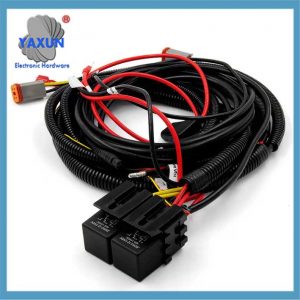 Werkseitig angepasste wasserdichte Buskabelbaumbaugruppe für die Automobilindustrie |
 Automotive Power, LVDs, Flat RCA, USB cable harness |
 Automotive Audio, Video, Radio cable and iso wire harness |
Production:
Design:
Wiring harnesses are typically designed for specific vehicle models and applications, considering factors like space constraints, wiring requirements, and safety standards.
Prototyping:
Prototypes are created to test the design and ensure it meets the requirements.
Assembly:
Harnesses are assembled by carefully attaching wires to terminals and connectors, often using automated processes for tasks like cutting, Strippen, and crimping.
Testing:
Rigorous testing is performed to ensure the harness’s reliability, Haltbarkeit, and ability to withstand various conditions.
Qualitätskontrolle:
Manufacturers adhere to quality standards like ISO/TS 16949 to ensure harnesses meet industry requirements.
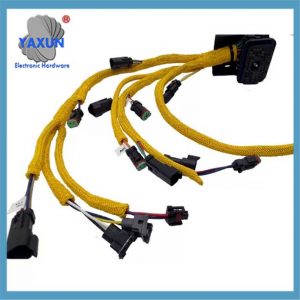 Automobil, Motorrad, Bus, Bike, Truck wire cable assembly |
 Diesel engine harness with 6.0L engine, without fuel heater |
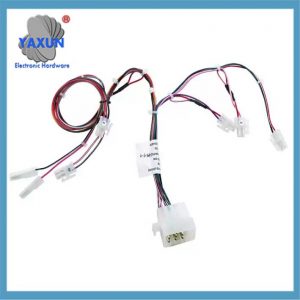 JST-Steckerverkabelung UL-Automobil-Kabelbaum-Montagekabel IATF16949 |
Kontaktiere uns
Warten auf Ihre E-Mail, Wir werden Ihnen innerhalb von 24 Stunden antworten 12 Stunden mit wertvollen Informationen, die Sie brauchten.
 English
English العربية
العربية bosanski jezik
bosanski jezik Български
Български Català
Català 粤语
粤语 中文(漢字)
中文(漢字) Hrvatski
Hrvatski Čeština
Čeština Dansk
Dansk Nederlands
Nederlands Eesti keel
Eesti keel Suomi
Suomi Français
Français Deutsch
Deutsch Ελληνικά
Ελληνικά עברית
עברית Magyar
Magyar Italiano
Italiano 日本語
日本語 한국어
한국어 Latviešu valoda
Latviešu valoda Bahasa Melayu
Bahasa Melayu Norsk
Norsk پارسی
پارسی Polski
Polski Português
Português Română
Română Русский
Русский Cрпски језик
Cрпски језик Slovenčina
Slovenčina Slovenščina
Slovenščina Español
Español Svenska
Svenska தமிழ்
தமிழ் ภาษาไทย
ภาษาไทย Tiếng Việt
Tiếng Việt
